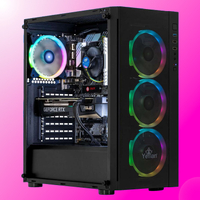This 8-bit demake of Baldur's Gate 3 was made for a 40-year-old laptop, and it's a massive shot of pure 1980s gaming nostalgia
Fan-favourite Karlach looks a tad pixel-y but it's a brilliant achievement.
Demakes of the latest popular 3D games are often designed to emulate how they might look on hardware a few years old, sometimes a couple of decades. Taking Baldur's Gate 3 and getting it to run on something that's over 40 years old, though, is on a whole new level—but that's exactly what one ingenious software engineer has managed to do.
Strictly speaking, the project isn't an exact clone of BG3, nor could it be, as the hardware in question is a TRS-80 Model 100 computer—arguably the world's first laptop. With an 8-bit processor running at 2.4 MHz, a few kB of RAM, and a built-in 240 x 64 LCD display, there's absolutely no chance of running one of the most hardware-demanding games out there.
Alex Bowen created Mol (as reported by Hackaday) as a piece of 'interactive fanart', a 1980s-era tribute to the first act of Baldur's Gate 3. So it's not a line-by-line perfect recreation of the game but if you watch the video above, many of the main events in the first act have been recreated.
Despite the limitations of the display, there's an undeniable charm to the simplistic sprites, and I'm sure BG3 fans will easily recognise the various locations, thanks to handy (or should that be Tandy?) text descriptions alongside them.
As someone who got into games and programming in the early 1980s on a Z80-powered home computer, I immediately got floods of nostalgia, especially seeing the assembly code used to create the demake. Where my first system only had 1kB of RAM, Bowen needed 24kB for the engine, basic sprites, and text.
Even that wasn't enough, so some ingenious tricks needed to be employed to get BG3's mountain of information, descriptions, and dialogue into a compact enough format to squeeze into the TRS-80's RAM. Today's games are hugely complex and require thousands of kB of memory to run, but most gaming PCs sport far more RAM than they'd ever need.
Forty years ago, that definitely wasn't the case, especially so when you're talking about a laptop. The TRS-80 Model perhaps wasn't the very first laptop you could buy but it was certainly the first that was genuinely usable and it sold in great quantities.
The biggest gaming news, reviews and hardware deals
Keep up to date with the most important stories and the best deals, as picked by the PC Gamer team.
Bowen developed Mol on the back of another project, Dungeon Delver Engine, which lets you create RPGs based on the 5.1 version of Dungeons & Dragons OGL-SRD. The code for both projects is hosted on GitHub, so if you just happen to have an old TRS-80 lying around, and you're familiar with zasm, then dust off your programming chops and get stuck in.
Best gaming PC: The top pre-built machines.
Best gaming laptop: Great devices for mobile gaming.

Nick, gaming, and computers all first met in 1981, with the love affair starting on a Sinclair ZX81 in kit form and a book on ZX Basic. He ended up becoming a physics and IT teacher, but by the late 1990s decided it was time to cut his teeth writing for a long defunct UK tech site. He went on to do the same at Madonion, helping to write the help files for 3DMark and PCMark. After a short stint working at Beyond3D.com, Nick joined Futuremark (MadOnion rebranded) full-time, as editor-in-chief for its gaming and hardware section, YouGamers. After the site shutdown, he became an engineering and computing lecturer for many years, but missed the writing bug. Cue four years at TechSpot.com and over 100 long articles on anything and everything. He freely admits to being far too obsessed with GPUs and open world grindy RPGs, but who isn't these days?
Most Popular







